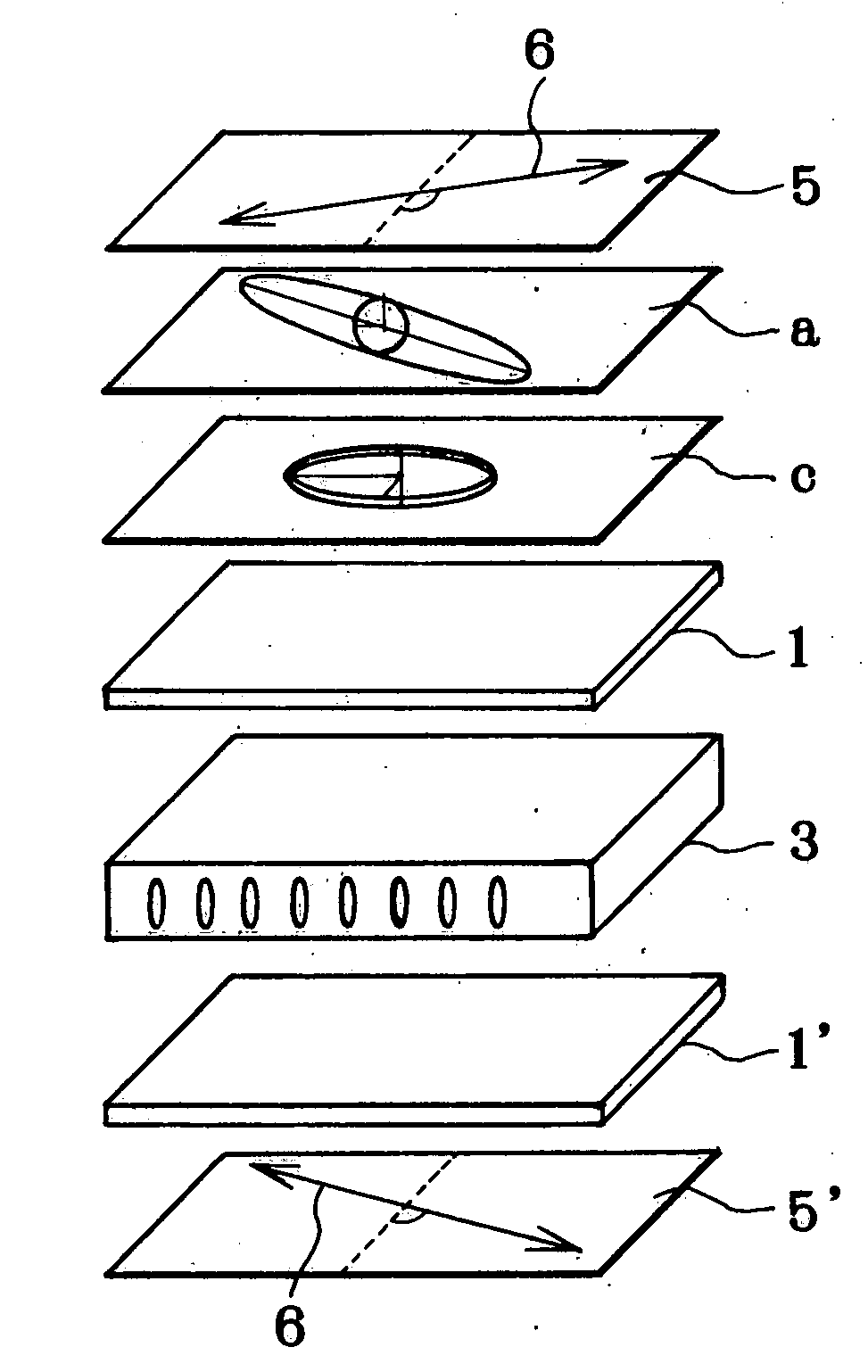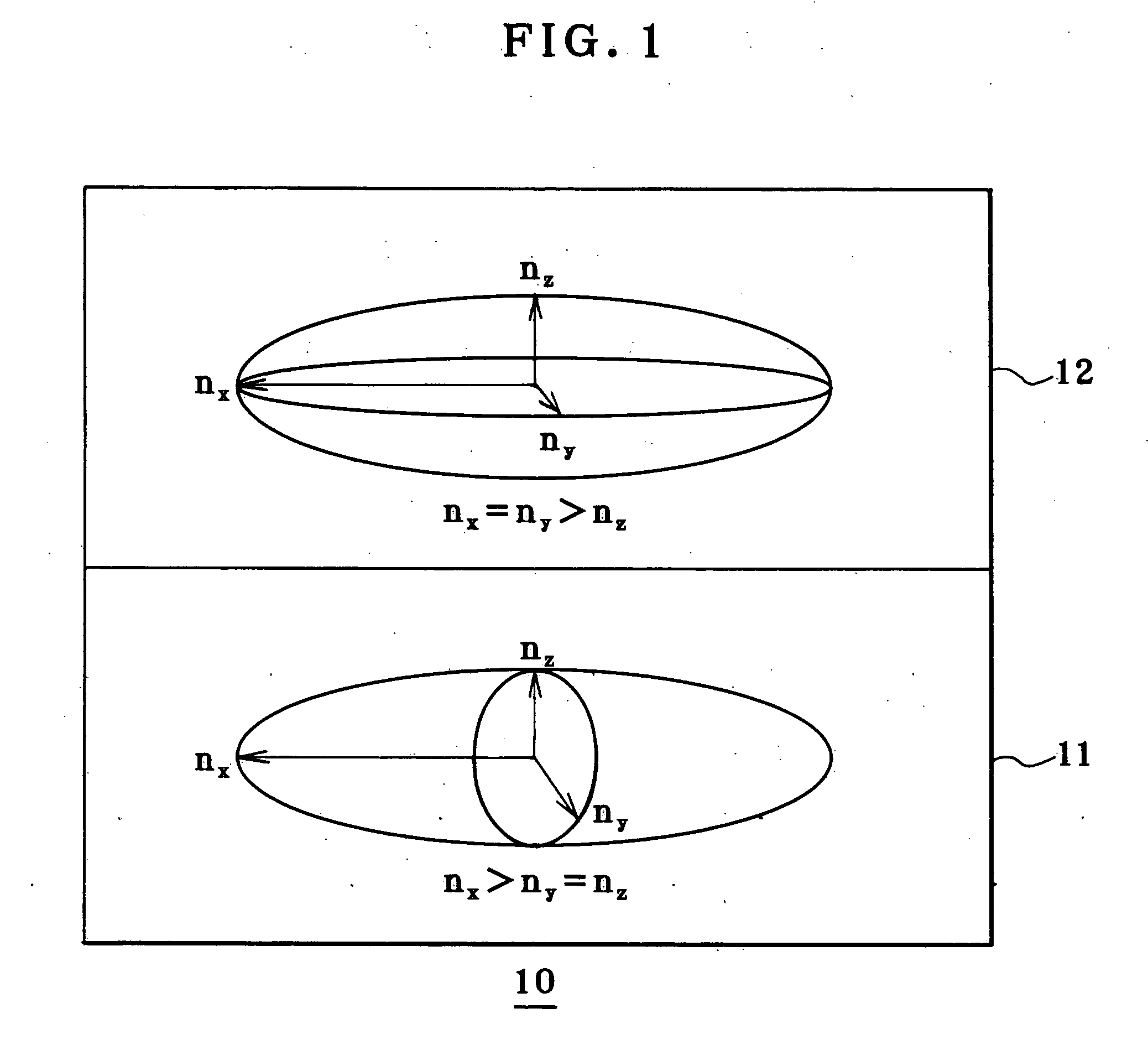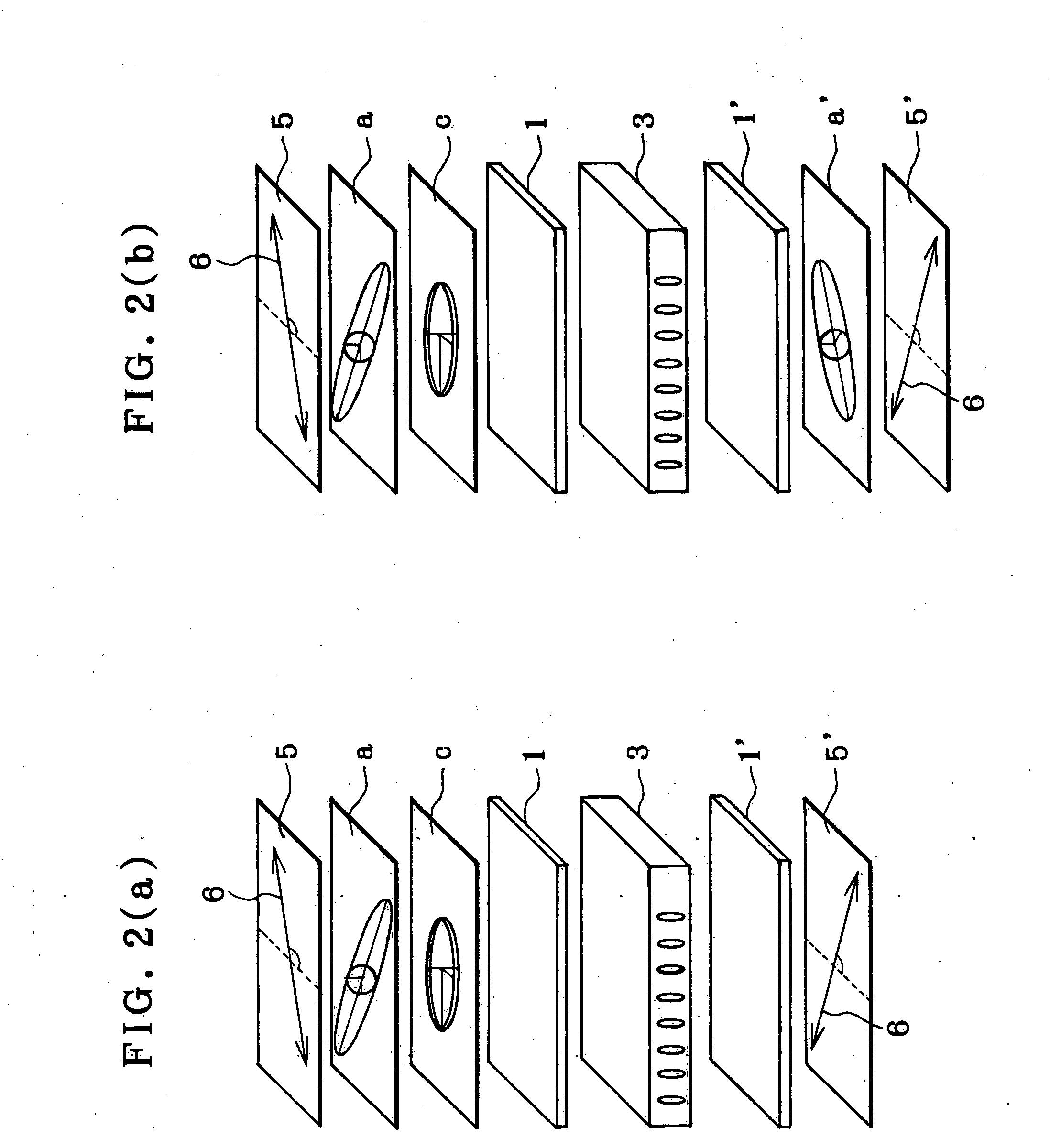Laminated retardation layer, its fabrication process, and liquid crystal display incorporating the same
a technology of retardation layer and liquid crystal display, which is applied in the direction of instruments, polarising elements, optics, etc., can solve the problems of reducing the display contrast, affecting the display quality, and rendering the above-mentioned low contrast and interference variation problems even more noticeable, so as to improve the viewing angle characteristics and high color reproducibility
- Summary
- Abstract
- Description
- Claims
- Application Information
AI Technical Summary
Benefits of technology
Problems solved by technology
Method used
Image
Examples
Embodiment Construction
[0061] Before giving an explanation of the laminated retardation layer according to the invention, an account is given of a retardation layer. In the invention, two kinds of retardation layers or a positive uniaxial retardation layer having an optical axis in a layer plane and a negative uniaxial retardation layer having an optical axis in a normal direction to a layer plane are used.
[0062] Two such retardation layers are now explained with reference to FIGS. 7(a) and 7(b). As shown, a z-axis is defined by a normal direction to a layer plane S, x- and y-axes are defined by orthogonal directions in the layer plane S, and refractive indices of the layer in the x-, y- and z-axis directions are indicated at nx, ny and nz. As shown in FIG. 7(a), a retardation layer that satisfies the relation of nx>ny=nz provides a retardation layer having an optically positive uniaxial property in the layer plane S, and will be referred to as a positive A-plate. As shown in FIG. 7(b), a retardation lay...
PUM
| Property | Measurement | Unit |
|---|---|---|
| thickness | aaaaa | aaaaa |
| reflection wavelength | aaaaa | aaaaa |
| reflection wavelength | aaaaa | aaaaa |
Abstract
Description
Claims
Application Information
 Login to View More
Login to View More - R&D
- Intellectual Property
- Life Sciences
- Materials
- Tech Scout
- Unparalleled Data Quality
- Higher Quality Content
- 60% Fewer Hallucinations
Browse by: Latest US Patents, China's latest patents, Technical Efficacy Thesaurus, Application Domain, Technology Topic, Popular Technical Reports.
© 2025 PatSnap. All rights reserved.Legal|Privacy policy|Modern Slavery Act Transparency Statement|Sitemap|About US| Contact US: help@patsnap.com



